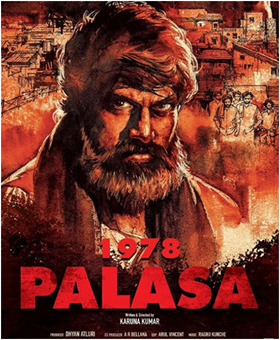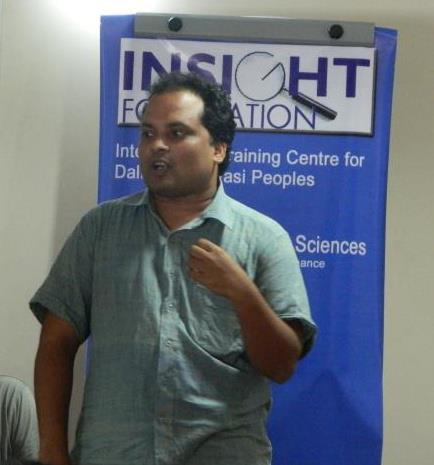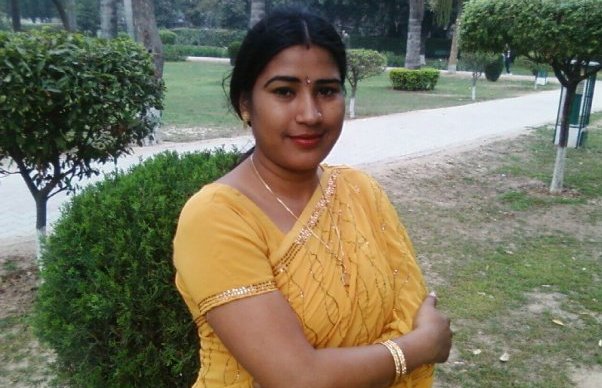Dr. SPVA Sairam
The movie Palasa 1978 is set in a village called Palasa in Srikakulam District of Andhra Pradesh state.

Like every village in India, Palasa too is divided into two quarters. One quarter is composed of Touchables and the other of Untouchables.
Touchables live inside the village, where as Untouchables live outside the village. Untouchables are subjected to ignominies of the worst sort. They are humiliated at every step in their life. Their sufferings had no parallel anywhere in the world.
Dr. Ambedkar, speaking about the condition of Untouchables, says:
“The Untouchables are the weariest, most loathed and the most miserable people that history can witness. They are a spent and sacrificed people. To use the language of Shelley they are—’pale for weariness of climbing heaven, and gazing on earth, wandering companionless, among the stars that have a different birth’, many people suffer such frustrations in their history. But they soon recover from the blight and rise to glory again with new vibrations. The case of the Untouchables stands on a different footing. Their frustration is frustration forever. It is unrelieved by space or time”.1
Such was the description of Babasaheb on the plight of Untouchables, which remains largely the same even in 2020.
Palasa 1978 is a movie about one such ‘weariest, loathed and most miserable’ untouchable family.
The Plot
To put it short, outside the village of Palasa live some families of untouchables who are folk singers by tradition. During the day, they work tirelessly in the cashew nut factory and by evening they assume their traditional roles of folk singers and performers. They entertain people with their remarkable songs and poems. Amidst the intolerable humiliation of their lives, it is these songs and poems which give them a sense of happiness, hope and solace. They are proud of their tradition. The folk tradition is their way of life. The protagonist (Madhav Rao) is known for his singing skills; he has a brother (Ranga Rao) who is also the part of folk singing tradition.
In the touchable quarters of the village live two Shavukar brothers (mercantile upper caste) called Linga Murthy and Guru Murthy, who in spite of their internal disputes and wrangles, continue to hold and exert their caste dominance and power over the masses by using these two untouchable brothers – often pitting one brother against the other.
The rest of the story is about how the hero realizes as to how both these Shavukars use him and his brother as a means to meet their political ends and how the hero transforms himself as a new person by the end.
What makes Palasa 1978 Undaunting and Unique?
Direct reference to Caste locations of Protagonists and Antagonists
Anyone who watches this movie is compelled to compare it with the blockbuster movie called Rangasthalam. Many are already comparing it. Both were set in a rural backdrop where the feudal lord(s) have their sway over the masses. In Rangasthalam the caste location of both the suffering masses and the antagonists is ambiguous. In one scene the masses are referred to as “oppressed people” when Prakash Raj is about to ascend the stage (this description lasts just for 5 seconds or so) and in the climax, the villain says that “You people aren’t qualified even to enter my home, how dare you think that you can enter our bed”
Even the caste location of the main antagonist (Prakash Raj) was not told openly; in the climax, he gets killed by the hero and only as he lays dead on the floor one gets a once in a decade chance to see his janeu. As such very few considered it as a movie openly dealing with the revolt of the oppressed against the established order. It is displayed and received only as a revenge drama.
On the other hand, Palasa 1978 takes a giant leap. Within the first fifteen minutes of the movie itself, one gets an extraordinary degree of idea regarding the caste location of both the protagonists and antagonists. The references are direct. Words like lower caste, untouchables, untouchability, and pollution are used many times.
These direct references to the caste of the oppressor and oppressed and the way the director unveiled the revolt of the lower castes against the upper castes and established order makes the film both unique and daring. It bears ample testimony to the valiance of the director. Very few films–maybe they can be counted on one’s fingers–are made which deal openly with caste. Palasa 1978 is one such movie.
The Assertion of Lower Castes
Unlike some of the movies which show oppressed communities as acquiescent, weak and powerless, this movie shows the assertive side of the community. That they belong to the tradition of folk singing and are carrying the legacy of their ancestors is frequently shown in the movie. They are singers and artists in nature, but owing to the circumstances, they are compelled to resort to violence to protect their self-respect and dignity. They prefer self-respect to submission. It echoes the spirit of Dr.Ambedkar when he says that “Self respect is much more important than food”.
Humanity over Venality!
It’s a common cry from governing classes that people from lower castes lack morality that they sell away themselves so easily for money.
The director’s pen cuts at the very root of this erroneous argument, like an axe. He depicts how the moral code is so intricately a part of their lives. For instance, Linga Murthy gives money to Ranga Rao to kill his brother to promote his political mobility. The preceding scenes in the movie leave one incline to think that Ranga Rao may kill his brother. But Ranga Rao does the opposite; he helps his brother Madhav Rao to kill Linga Murthy.
The director presents a few such scenes to show that people from oppressed communities don’t sell themselves away for money. He shows that values are be-all and end-all for them. They prefer humanity to chicanery and moral life to a monster’s life.
Heart-wrenching Conversations
Though the role of the heroine Nakshatra was of a short span, her presence and elegance make the movie interesting. The conversation between her and the hero not only displays the enchanting romance but also tells us how their aspirations for a better and happy life are crushed by caste. She tries to enlighten Madhav Rao about the cunning nature of shavukars and their motives to use untouchables as scapegoats for building their caste empire. Her words of disconsolation about leaving their traditional art forms and how it erased their only happiness leave people with tears.
Inspector Sebastian and his Ambedkaraite Spirit
One of the prominent characters in the movie is Inspector Sebastian. When the hero decides to kill Guru Murthy, Inspector Sebastian stops him and takes him to an isolated place in his jeep. The director conveys his core message in the movie through Sebastian and this conversation between the two takes the film to a sensational level. Very rarely does one finds such a remarkably enlightening conversation. Sebastian comes from a lower caste Christian family. He knew very well as to how education can transform not just a person but also a community. Sebastian’s story bears ample testimony to the emancipatory role of education.
Sebastian narrates his experience as a lower caste man as to how his parents were forced to carry the faecal matter of upper castes on their heads. He proceeds to tell Madhav Rao as to how he was aggrieved at it and how his father consoled him and reminded him about Dr. Ambedkar’s life and struggle.
Sebastian echoes the words of Dr. Ambedkar about the importance of education and its emancipatory role.
What is education?
The director doesn’t wish to equate education with merely attaining degrees. He proceeds in an Ambedkaraite spirit and explains it through the words of Sebastian. He conveys that the real end(s) which education seeks is to enable the oppressed groups to occupy those positions (Babasaheb calls them strategic positions) from where they can protect their own people (political power).
He uncompromisingly says that it is only through education that social emancipation is possible and that social emancipation must precede political emancipation.
Unity of the oppressed
“The caste system is not merely a division of labor; it is also a division of laborers”
-Dr.Ambedkar

That oppressed are divided among themselves by the sanction of scriptures is not a new phenomenon, in fact, it is one of the basic constituents of graded inequality. Dr. Ambedkar said it long ago. But, Savarna duffer director Anubhav Sinha wishes to make fun of the divisions among the oppressed with a malicious motive and makes money over it by branding his film as anti-caste. Clearly it’s a sign of a disease called “Savarna Anxiety”.
Director Karuna Kumar counters such nincompoop directors and proceeds to raise a slogan for the unity of the oppressed. Sebastian asks Madhav Rao to educate himself and urges him to unite all the oppressed in this journey. He righteously asks Madhav Rao to do away with the scriptures which sanction and promote graded inequality. In short, Sebastian urges Madhav Rao to transform himself into a new person by uniting all oppressed across the country.
The Rebirth!
What is the purpose of life if there is no hope? Hope instills the desire to live, to prosper and to succeed. One is reminded of the words of Babasaheb Ambedkar when he said:
“In this country, the situation is such that we can be kept in a hopeless state for a thousand years. As long as such conditions prevail, it is not possible to begin to produce ambition to progress. We have not been able to do anything about it by staying in the Hindu religion. The Chaturvarna is found in Manusmriti. The hierarchy of the Chaturvarna is very dangerous for the progress of mankind. It is written in the Manusmriti that Shudras should do only menial services. Why should they have education? The Brahmin should get education, the Kshatriya should take up arms, the Vaishya should do business, and the Shudra should serve– who can disrupt this precise arrangement? There is profit in it for the people of the Brahmin, Kshatriya, and Vaishya castes. What of the Shudra? Can any ambition develop in the lower castes? The Chaturvarna system was not created haphazardly. It is not just a popular custom. It is religion… The poor man lives on hope. ‘Hope!’ [In English]. The source of life is hope. If this hope is destroyed, then how will life go on? Religion makes one hopeful, and to those in pain, to the poor, it gives a message: “Don’t be afraid; life will be hopeful, it will be.” So poor and distressed mankind clings to religion”.2
Palasa 1978 offers a tale that says, even in the midst of all ignominies and discrimination, there can be hope and that one should never lose hope.
Madhav Rao contemplates the words of Sebastian and travels across the country, he sleeps near Dr. Ambedkar’s statues and drops the religious thread tied to his wrist.
This scene where he drops his religious thread on the ground stands on a class of its own. It indicates both the death and birth of a few things. It’s a death of the past and the birth of the present. It’s a death of religion and the birth of man. It’s a death of the life of subjugation and humiliation and the birth of a journey towards the reclamation of the sacred human personality to its fullest sense.
It represents the essence of the 21st vow which Dr. Ambedkar advocated on 14th October 1956 on the eve of his conversion to Buddhism.
Importance to Local Dialect
It is a common phenomenon in Telugu cinema: dialects related to regions of Telangana and North Andhra are used only in a comic or derogatory sense. Directors give no importance to such dialects. Director Karuna Kumar who himself comes from the region of North Andhra uses the very dialect as the movie’s language. Everyone speaks the same dialect. Prominence is given to the dialect of Srikakulam. In fact, Andhra Pradesh itself has nearly 8-10 different Telugu dialects. As you cross the East Godavari district, the degree of variation in dialect increases. The director deserves praise for giving such prominence to the Srikakulam dialect. It’s an antidote to those who speak only “pure” language. One feels like observing a minute of silence for those who believe that there exists a pure caste, sex, language, religion, and nation.
Performances of the Artistes
It wouldn’t be an exaggeration if one says that every actor performed well in this movie.
Janardhan (Linga Murthy) and Raghu Kunche (Guru Murthy) proved worthy in displaying the casteist cunning nature of upper castes. Hero Rakshit (Madhav Rao) acted very well, the way he portrayed four variations of the same role is commendable.
Ranga Rao played by Thiru Veer looked impressive. His eyes and his attitude of dissent engage you with the plot in a deeper sense. Rama Raju (Sebastian) gave life to the whole story. His stature and fiery looks take the movie to a new level. His conversation with Madhav Rao in the climax is the soul of the story. Praween Yendamuri acted well, the role played by Mirchi Madhavi as his mother deserves applause.
It’s a visually stimulating movie, everything appears natural. Songs are chiefly sung by traditional folk artists from Bahujan classes and they reflect the vibrant nature of folk tradition. Interestingly Raghu Kunche not only composed fantastic music but also acted well in Guru Murthy’s role.
Conclusion
Palasa 1978 is a movie of assertion. It’s a story of a revolt of the lower castes against the established order. It’s a movie dedicated to the cause of Ambedkarism, of the unity of the oppressed, of the cause of bahujans – social, economic and political.
Only directors coming from Bahujan classes can make such bold and realistic movies. While the genius of Rajamouli, Trivikram and others are confined only to making films by copying Hollywood movies (in some cases the songs and plots of video games have been used), directors like Karuna Kumar, Nagraj Manjule and Pa Ranjith portray the lives of bahujans who are suffering under the realm of caste, in a splendid and scintillating way. This speaks a lot about the merit of Savarna filmmakers, their merit is copying others and presenting it as if it is their own contribution.
As my brother, Vinay says “They couldn’t even discover a spoon”.
I will conclude with one dialogue from the movie where Madhav Rao defends his act of killing Guru Murthy.
He says, “They should live and we should also live. When our students stop committing suicides in universities, when our people are not killed for marrying upper castes, when there is equality and when you finally comprehend the reason why a god comes to replace the lost head of Ganesha, but refuses to show up when the thumb of Ekalavya was cut, only then will you be able to see people like Madhav Rao”. Then he enters the lock-up in the police station and surrenders to the police.
There was thunderous applause from the audience when they listened to those lines. It’s a classic movie. Every bahujan must watch movies like Palasa 1978 and encourage them.
Jai Bhim!
~
References
1. Babasaheb Ambedkar Writings and Speeches, Volume 12, page 733
2. Dr.Ambedkar’s Speech on 14th October,1956 (Dr.Ambedkar Speaks ,Volume 2, edited by Dr.Narendra Jadhav)
~~~
Dr. SPVA Sairam is a dentist by profession.
Images courtesy: the internet.










